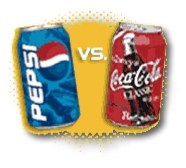Customer focus does not happen offhandedly. It requires leadership and emphasis on details to stay effective. Many organizations fail or drift because they believe it is easy, they take it for granted and they don't deliver the concentrated efforts needed to be successful.
Donald Keough, who was President and COO of Coca-Cola Company at the time, was asked by IBM Chairman, John Akers, to present at a large meeting of IBM's key people in 1989. Mr. Akers opened the meeting by speaking about "the supremacy of the customer in the IBM world" and followed it with a video showing IBM executives, including him, discussing "ways we can better serve our customers and reaffirm our dedication to those customers." In Mr. Keough's book The Ten Commandments for Business Failure he writes, "On the conference table in front of every executive taking part in the customer-oriented discussion was a can of Pepsi-Cola. No one said anything about it."

After Mr. Keough was introduced, he asked the group to repeat the video and stopped the film when the Pepsi products were shown. He observed, "It seems to me, John, that you could literally stop the entire meeting right now because the point has been made. You and your associates are talking about awareness of the customer, and yet as a group you are oblivious to one of your customers who is standing right here on the stage." After "the oxygen left the room" momentarily, the audience "exploded with applause. They understood the message."
Lou Gerstner replaced Akers and turned IBM around regarding customer closeness and satisfaction. At a meeting in 1994 he showed his team a chart in which IBM was ranked eleventh in customer satisfaction among its competitors. In his book Who Says Elephants Can't Dance? he described these early years of the transition, "We don't execute because, again, we don't have the perspective that what counts outside the company is more important than what counts inside. Too many IBMers fight change if it's not in their personal interest. There's a powerful word in the IBM vocabulary. I've never heard it in any other company. The word is ‘pushback.' It's as if decisions are meant to be suggestions."
Gerstner took a company that was conducting 339 different satisfaction surveys, with very little comparability and transformed that process into fewer, more comprehensive surveys and incorporated the resulting data "into our tactical and strategic plans on a semiweekly basis." His team defined one of its key milestones as "achieving customer satisfaction second to none."
When Akers was replaced by Gerstner, Keough's book declares, "The mixed messages were gone." I'm not sure that it was a mixed message, but it was a shallow message. What held them back? They couldn't see it. They didn't understand the work that was needed to make the organization customer-centric. They wrongly assumed that "getting closer to the customer" was easy and didn't realize that it required a lot of disciplined efforts and attention to detail.
Outperforming for your customers is about educating the entire company, starting with your executives, how to think like a customer and how the process happens within the organization. It is naïve to believe that anyone and everyone in your workforce can connect with thinking like a customer thoughts. It is not automatic. It has to be aggressively pursued as a "milestone."
The fallacy of change is that most organizations cannot visualize what they want to become and therefore they see it only as a series of small variations on the present. Thinking like a customer (TLC) represents dramatic change. It involves looking at every detail from the viewpoint of your customers. It also involves every employee's active input, not following a "program" that management invented. It must be centered on a shared dream that evokes how the future will be better. And it requires leadership to never let the progress stop and to remind the organization that it can always get better at TLC.
